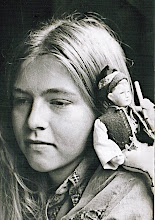Sunday, February 13, 2011
Streetcar Sunday -Memphis, Tennessee
The Memphis Area Transit Authority (MATA) currently operates vintage trolleys which were re-introduced in the 1990s to help reverse urban decline and increase traffic to the downtown pedestrian mall. The trolleys they use today were originally used in Porto, Portugal, but Memphis also had its own vintage streetcar system in earlier years.
Memphis had streetcars starting 1895 and running until 1947. For a number of years after that, they ran trolley coaches, which are buses that run on electricity, but by the end of the 1950s, they had changed over to diesel buses. Streetcars may have been considered an antiquated nuisance at the time, but they seem to have helped greatly in revitalizing Downtown Memphis in recent years. The system is popular with both residents and visitors, assuring that it is well used at various times of the day and week.
There are several good links with information on the Memphis streetcar system. For a great historical overview, look at Mike Condren's Memphis Street Railway. For current streetcar information and pictures, take a look at John Smatlak's website, and the American Public Transportation Association.
Labels:
Streetcar,
Streetcar Sundays,
Tennessee,
tram
Friday, February 11, 2011
Sepia Saturday - Martin and Sarah Meyers
 |
| Grant and Gertrude |
Remember Grant and Gertrude from a previous post?
Grant was my great grandfather. Below is a portrait of his grandparents and their children. I'm not sure exactly when the photo was taken, but Martin died in 1895, so we know it was earlier than that. Martin, with his white beard, is easily recognizable as the patriarch. The poor little tiny woman sitting next to him, and looking very tired, is his wife Sarah. They are surrounded by their 15 (!) living children. I can only assume that there were additional children who died in infancy as they so often did in those days.

Martin's great-great-great Grandfather, Sebastian (Baschi) Meyer was born in Lucerne, Switzerland in about 1592. He worked as a cabinet maker and was listed as a Mennonite (or Anabaptist.) His wife, Otilla, was of the same faith and was imprisoned for it, but escaped. Baschi and Otilla then moved to Zurich, where they had four of their five children. The family continued to be on the move as was typical of the Mennonites fleeing persecution. Their descendants ended up in the Palatinate region of Germany, eventually emigrating to Pennsylvania around 1710.
I wondered what it was that made people want to persecute the Mennonites. It really boiled down to one basic Mennonite belief - that people should not be baptized until they were of an age to understand and accept the religion. In many people's minds, that constituted heresy, which justified burning at the stake, drowning, decapitating, and other various tortures - all in the name of God. Thousands of Mennonites died this way. Many others were imprisoned and had their property taken.
The Mennonites adhered strictly to the New Testament. They also believed in non-violence, simple living, and separation of church and state. Mennonites in America opposed slavery from the very beginning. The Meyers who moved to Pennsylvania continued in their faith, although at some point they branched off into what's known as the Church of the German Brethren. It's interesting to look at the different related faiths, including Mennonite, Amish, Quaker, and German Brethren. In many cases, the differences in beliefs seem very small.
Martin was a minister of the church and was devoted to his religion. I have to wonder how much the rules of the religion or the adherence to it changed from his generation to the next. He is wearing the traditional beard with no mustache favored by religious pacifists, who associated mustaches with the military. A number of his sons wear mustaches though, and at least one of his daughters is wearing a fancy collar, which might have been considered overly showy by their standards.
Martin and his family moved from Pennsylvania to Illinois, before finally settling in Morrill, Kansas. I can only guess that they moved because their farm was no longer of sufficient size for the family and/or that they were attracted by homesteading opportunities in Kansas with the 1862 Homestead Act. According to the Kansas State Historical Society, homesteaders were entitled to 160 acres of land, which they had to improve within five years. Many gave up and headed farther west or back east, because conditions were so harsh and improvements were difficult to make. Among other things, they had to worry about bitter cold, disease, locusts, outlaws, and lack of wood and other building materials. The tradition of simple living may have helped the Meyers endure, but I wonder if they ever regretted the move.
As I sit here in my centrally-heated house, with running water, electric lights, indoor bathrooms, washing machine, dryer etc., I can only imagine the hardships they had to endure. I am filled with awe and admiration for the pioneer spirit of these tenacious immigrants.
Be sure to check out all of the other interesting posts at Sepia Saturday.
Planning Your Summer Vacation
It's never too early, and these motor courts do get booked up, so make your reservations now. These three places are all in South Carolina.


 Here are the backs of the cards in the same order.
Here are the backs of the cards in the same order.



Subscribe to:
Comments (Atom)


















